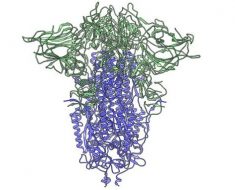ME & MY OPERATION: New procedure to give you perfect pins after a painful blood clot
ME & MY OPERATION: New procedure to give you perfect pins after a painful blood clot
- 60,000 people a year develop a deep vein thrombosis – a blood clot in the leg
- Many survivors are left with long-term painful swelling, which feels unsightly
- Wendy Yaxley, 53, from Lincoln, who works in admin at an antiques fair, was one
- She’s one of the first-ever people in the UK to have a pioneering new treatment
THE PATIENT
During my late teens I developed a throbbing pain in my left hip that spread down my leg.
One Saturday night I called the out-of-hours GP, who diagnosed a trapped nerve in my back and advised paracetamol and rest. But the next day I was crying in pain and the whole of my left leg was blue and swollen.
I rang the GP again and this time he said it was likely to be a deep vein thrombosis (DVT) — a blood clot in a deep vein in my left leg — and that there was a risk it would dislodge and travel to my heart or brain, triggering a heart attack or stroke. I was terrified.

Risk: A blood clot can dislodge and travel to the heart or brain, triggering heart attack or stroke
He did not explain what could have caused it — I suspect it was linked to me taking the contraceptive Pill after the birth of my first child.
The GP prescribed warfarin to thin my blood and dissolve the clot. After a week spent mainly in bed, I managed to stand up, but my left leg was still swollen and throbbing with pain.
I continued to take warfarin for six months and gradually the swelling went down, though it did not disappear.
That’s how my health stayed for the next 30-odd years, during which time I suffered daily pain. Doctors told me that although the DVT clot had disappeared, I now had post-thrombotic syndrome, where inflammation caused by the clot had damaged valves in a vein in my leg.
-

The people who drink URINE to lose weight and cure acne:…
Ten vital things every woman needs to know about breast…
Looking on the upside really DOES cut the risk of heart…
How to be a super-ager: Experts reveal tips for staying…
Share this article
Normally, valves open and shut to keep blood flowing in the right direction, but because of the damage, valves in my leg were stuck in the open position. As a result, blood pooled in the lower part of my leg.
It caused unsightly discolouration (a distinctive purple-blue colour), swelling at times and pain when I walked.
I could feel my leg filling with blood when I stood up — it felt like bubbles.
I struggled to keep jobs as I couldn’t stay on my feet for more than a few minutes and life was difficult with four children. I had to spread the shopping, ironing and cleaning over several days.

Did you know? 60,000 people a year develop a deep vein thrombosis – a potentially-fatal blood clot in the leg, which can cause painful swelling
I begged many GPs for help but was only offered compression stockings to improve blood flow. They provided slight relief, but as soon as I took them off the problem returned.
In 2015, I went to my GP again and was referred to a haematologist. During the examination, they mentioned a new type of surgery that was being trialled.
A few weeks later I met Bruce Braithwaite, the vascular surgeon pioneering the technique. He explained that the operation involved creating a new valve using a small bit of vein from a healthy one in my thigh. The new valve would work just like a normal one.
I had the procedure under a general anaesthetic and went home the next day. The improvement was dramatic. Within days my left leg was the same size as my right.
It’s changed my life — the pain and swelling have gone. I was able to buy my first ever pair of knee-length boots, ride on my husband Peter’s motorbike without it aggravating the pain, and wear jeans. Since the surgery three years ago I’ve been able to start work part-time.
Best of all, I’m able to run around with my seven grandchildren, pain-free and mobile like I was in my teens.
THE SURGEON
BRUCE BRAITHWAITE is a consultant vascular surgeon at Nottingham University Hospitals NHS Trust.
Prolonged inactivity, obesity and taking the Pill are some of the risk factors for a DVT.
We treat it with blood-thinning drugs, such as warfarin, which dissolve the clot — this stops it blocking any more of the vein or moving to other blood vessels, where it can cause stroke, heart attack or potentially fatal pulmonary embolism (where the clot blocks the pulmonary artery that carries blood from the heart to the lungs).
Some patients must take these drugs for life whereas others only until symptoms resolve.

Fact: Prolonged inactivity, obesity and taking the Pill are some of the risk factors for a DVT
Around 60 per cent of people with DVT will develop post-thrombotic syndrome.
As a result they are left with a painful, swollen leg because blood that should be pumped back through the veins to the heart, instead pools in the legs as soon as the patient is upright — a problem called reflux.
Patients are also at risk of ulcers due to extreme pressure from all the blood that collects inside the veins damaging tiny blood vessels in the skin.
Many patients are at risk of another DVT as blood continues to pool, so are prescribed warfarin for life.
The other standard treatment is to wear compression stockings, but some patients find them hot and uncomfortable.
Various surgeries have been tried, including procedures to repair the damaged valves and, recently, insertion of tiny metal tubes — called stents — to prop open veins that have collapsed or narrowed because of the scarring effects of the DVT.
However these don’t really work for all DVTs as stents cannot repair or replace the faulty valve.
This new procedure was developed in France but, as far as I am aware, I am the only surgeon in the UK performing it and leading trials.
The idea is to create a new valve, made from a tiny piece of healthy vein, to reduce the flow of blood back down the leg.
First, we make a 6in incision in the groin to harvest a 1.5in section of the great saphenous vein, which runs the length of the leg. This piece of vein is turned inside out until one end overlaps the other to form a cup-shaped piece of tissue.
It is taken through the same incision then stitched inside the common femoral vein, a large vein which is the major route for blood travelling back up to the heart.
The new valve is stitched in such a way that it works in a similar fashion to a normal valve — opening in one direction to let blood through, but blocking its passage in the other direction.
The whole procedure takes less than an hour and because we are using the patient’s own tissue, there are no problems with rejection.
I have performed the procedure on around 30 patients and have submitted data on the results for publication.
These results show 70 to 80 per cent reported significant improvements in terms of reduced pain and swelling, while 80 per cent of ulcers healed completely in weeks.
■ Surgery costs £3,000 to £5,000.
Source: Read Full Article





